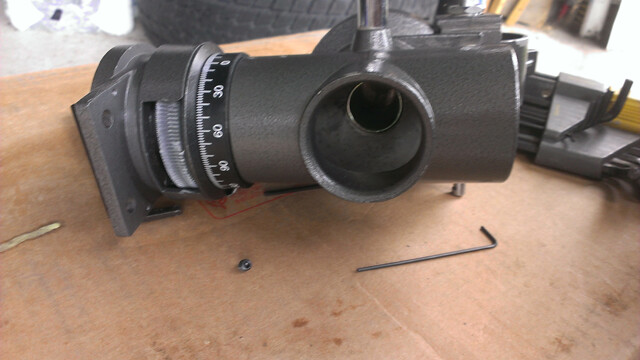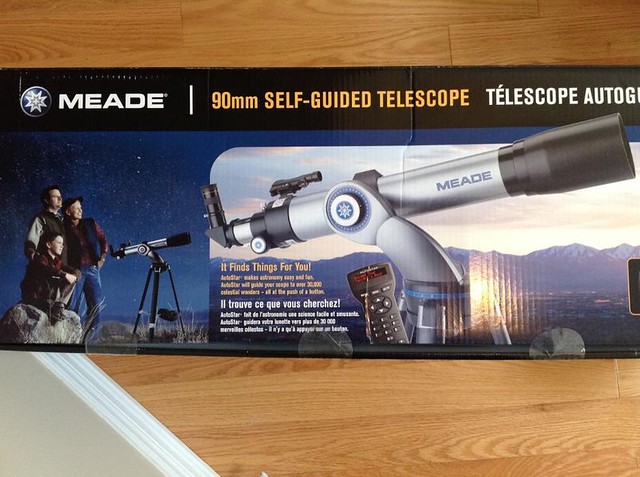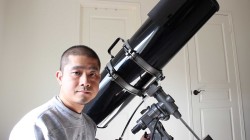In this video, I will introduce new astronomers to the basics of using telescopes on an equatorial mount. How to use an Equatorial Mount for Beginners will explain the difference between an equatorial mount and an altazimuth mount and the advantages of each. How to determine the right ascension and declination motions using slow motion control knobs. Without getting too technical, I will describe the equatorial grid, right ascension, declination and how your equatorial mount follows these imaginary lines. I also walk through a simulation of how it would operate out in the field using Stellarium planetarium software.
Tag Archives: amateur astronomy
Lin-Optics Equatorial Mount Maintenance Project

My Discovery 8 EQ‘s equatorial mount is over 10 years old and it has been very ‘sticky’. It is a ‘Lin-Optics’ brand-name mount that I cannot find of any documentation on the web. Last week, I attempted to disassemble it to replace the lubrication but could not figure out how to remove the inner shafts.
This weekend, I finally had more time to look into the issue further. I needed a little bit more time to carefully figure out which set screws were meant to be removed, and which were meant to be tightened down in order to remove the shafts. It was like a rubik’s cube puzzle.
After an hour, I finally figured it out. The ascension shaft took me half as much time to figure out. I cleaned the parts with degreaser spray and wiped them clean with paper towels. If I could have collected the metal filings, I would say there was about a teaspoon of it. I then applied a generous amount of white lithium grease and put it back together.
Now, my mount is buttery smooth with the Newtonian telescope on it. It feels like I just bought myself a new mount. A fun project with long-lasting benefits.
My First Telescope: Meade 90mm Goto Refractor

I bought my first telescope today off Kijiji. It was a Meade 90mm Goto Refractor. I’ve always been a fan of astronomy and I watched a lot of astronomy documentaries, but I had no clue where to begin with telescopes. So I scoured the web for telescope basics, how to choose a telescope, and a few telescope reviews. I concluded that my first telescope would be a refractor, and my original budget was $100 for a used scope. So I went a little over my budget and paid $130 for this one, and it was brand new. Not bad.
The telescope had a 90mm aperture and a dew shield. It came with 5 Meade “MA” eyepieces ranging in focal lengths from 24 mm to 6 mm. The tripod came with a built-in tray that conveniently folded along with the legs without it having to be disassembled first. The computer had a control keypad that connected via a telephone coil.
Setup was simple enough that it only took me 30 mins to set it up. The red dot finder was also easy to setup. As with any new telescope gear, it is a well known fact that there will be clouds on the first night of your purchase. However, tonight, I got lucky.
I set it up in my backyard and went through the initial 2-star alignment. It was supposed to orient itself to the nearest bright star. My problem was that I didn’t know what the names of the stars were. So I was lost. At the end of the setup procedure, I followed the tour, but each object was not in the field of view. And whenever something was in it, I didn’t know if it was the correct object. The only recognizable object would have been Saturn, but it was too low that the houses next door were blocking the view.
I just ended up manually slewing the scope using the controller. I was amazed at how may more stars I could see. I even saw a double star, and a couple of satellites passing through the field of view. Overall, the feeling was good. Somehow, something got triggered inside me to continue along this path of amateur astronomy. More to come.

